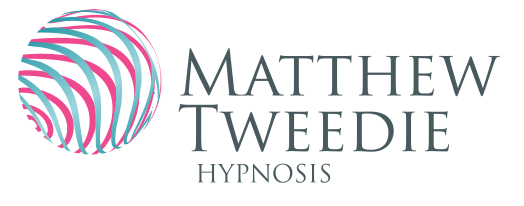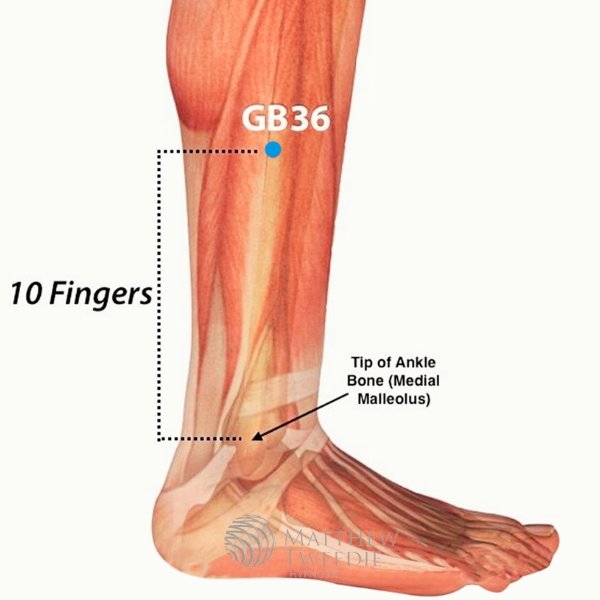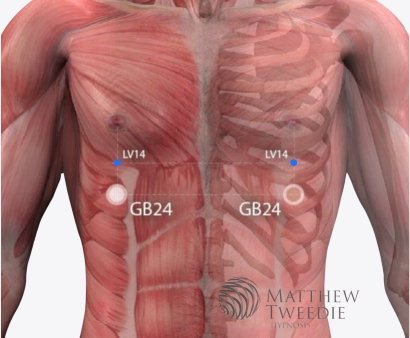SP 10, known in Chinese as Xuehai (Sea of Blood), is located on the thigh’s medial aspect. To find it, flex the knee and measure 2 cun above the border of the mediosuperior of the patella, on the bulge of the medial portion of the quadriceps femoris muscle.
Read moreSI18
The acupuncture point known as "SI 18," also referred to as "Quanliao" or "Cheek Bone Crevice," is located directly below the outer canthus of the eye, within a depression on the lower border of the zygomatic bone.
Read moreLU10
The acupuncture point known as "LU 10," translates to "Yu Ji" in pinyin and "Fish Border" in English. It is positioned at the midpoint on the palmar aspect of the thumb, specifically in the crease behind the thenar eminence at the transition between red and white skin.
Read moreLI9
LI9 or “Shanglian" in Chinese is known as “Upper Ridge” in English. This acupoint is positioned along the dorsal radial side of the forearm with the elbow flexed, specifically on the line connecting LI 5 and LI 11, situated 3 cun below the transverse cubital crease.
Read moreLI7
LI7 is called Wenliu in Chinese and it means Warm Flow. This is located at the area of the forearm’s dorsal radial side when the elbow is flexed.
Read moreK18
K18 is positioned on the upper abdomen, 3 cun above the center of the umbilicus, and 0.5 cun lateral to the anterior midline.
Read moreH1
The acupoint known as "HT 1," or "Ji Quan" in pinyin. Also, this is referred to as the "Highest Spring" in English. This acupuncture point is situated at the center of the axilla. It is on the radial side of the axillary artery.
Read moreBL67
BL 67 (UB 67), known as "Zhi Yin" in pinyin or "Reaching Yin" in English, holds a special place in the realm of traditional Chinese medicine. Located at a precise anatomical location, this acupuncture point offers a multitude of clinical applications.
Read moreT10
T 10
Thoracic Vertebra 10
The acupuncture point known as "EX Huatuojiaji at T10," referred to as 華佗夾脊 in Chinese and "Sides of Spine at T10" in English, is a significant point in acupuncture therapy. It is situated 0.5 cun lateral to the lower border of the spinous processes of T10.
Clinical Applications: This acupuncture point, EX Huatuojiaji at T10, has various clinical applications and can be considered for influencing the following issues and symptoms:
T10 (Left) Innervation: It influences the gall bladder and can be used for conditions such as gallstones, high cholesterol, and various digestive issues.
T10 (Right) Innervation: It affects the bile duct and is employed for gallbladder and bile duct-related issues.
Utilized in Healing Systems: EX Huatuojiaji at T10 is extensively utilized within the Tam Healing System and Tong Ren Therapy. It can be needled and incorporated into tuina and/or tonren therapy.
TCM Diagnostic Pattern: While a single acupuncture point is typically not considered an empirical way to address a Traditional Chinese Medicine (TCM) diagnostic pattern, EX Huatuojiaji at T10 is a strong candidate for inclusion in an acupuncture treatment protocol, especially for patients exhibiting symptoms associated with Liver and Gallbladder Damp Heat.
Potential Conditions Addressed: EX Huatuojiaji at T10, when integrated into a well-designed acupuncture treatment plan, has the potential to influence conditions such as Chronic Cholecystitis, Gallstones (Cholelithiasis), and Hyperlipidemia.
Tianjing has other indications, including:
Migraine
Scrofula
Deafness
Epilepsy
Functions: This point serves various functions in TCM:
Resolving Phlegm and Dampness: It helps eliminate dampness and phlegm from the body.
Dispelling Nodules: Tianjing is known for its ability to disperse nodules or masses.
Activating the Meridian: It promotes the free flow of Qi along the meridian.
Alleviating Pain: Tianjing can be used to relieve pain.
Important to note, He-Sea points, including Tianjing, serve as pivotal locations where the Qi of the meridian gathers and delves deeply into the body's internal pathways. These particular points are frequently harnessed to address health conditions associated with rebellious Qi and gastrointestinal distress, commonly including symptoms such as diarrhea.
BL12
Fengmen (BL12) is an acupuncture point in Traditional Chinese Medicine (TCM) located along the Bladder meridian. This point is also known by its Chinese name, "风门" (Fēngmén), which can be translated to "Wind Gate" in English. BL12 is positioned on the upper back, and it has specific therapeutic functions and indications in TCM.
Read moreGB33
The acupuncture point known as "GB 33," referred to as 膝陽關 in Chinese and "Knee Yang Joint" in English, holds a significant place in Traditional Chinese Medicine (TCM). It is situated 3 cun above GB 34, positioned laterally to the knee joint, within a subtle depression above the external epicondyle of the femur. This specific location falls between the femur bone and the biceps femoris tendon.
Read moreGB36
Acupuncture point "GB 36," known as 外丘 (Wai Qiu) in pinyin and "Outer Hill" in English, holds a special place in traditional Chinese medicine. Located 7 cun above the tip of the external malleolus on the anterior border of the fibula, this point offers a range of clinical applications and theoretical associations that can significantly enhance your acupuncture treatment protocols.
Read moreGB39
The acupuncture point known as "GB 39," which is written as "懸鐘" in Chinese characters, is referred to as "Xuan Zhong" (alternatively "Jue Gu") in pinyin and "Suspended Bell" (alternatively "Severed Bone") in English. You can locate this acupuncture point:
Read moreGB27
GB27
Gall Bladder 27
The acupuncture point known as "GB 27," referred to as "Wu Shu" in pinyin and "Fifth Pivot" in English, can be located on the lateral side of the abdomen, situated anterior to the ASIS and positioned 3 cun below the level of the umbilicus, specifically lateral to CV 4.
This particular acupuncture point, along with GB 26 and GB 28, holds significance as useful points on the Dai Mai meridian, which exerts influence over the KD, GB, CV, Chong Mai, and GV Meridians. GB 27, in particular, exhibits a greater relevance to addressing male-specific issues such as testicular pain or retraction and lower abdominal discomfort associated with shan disorder.
The theoretical associations of GB 27 make it a vital reference point when crafting an effective treatment protocol, as it serves as the intersection point of the GB and Dai Mai Meridians.
Indications: Wushu comes into play for a variety of health concerns, including:
Abdominal Pain and Hernia
Constipation
Prolapse of the Uterus
Morbid Leukorrhea
Functions: The versatility of Wushu lies in its ability to perform several functions effectively. It primarily serves to:
Regulate the Dai Mai Vessel: This regulation is essential for maintaining the harmonious flow of energy in the body.
Regulate the Lower Jiao: The lower abdominal region benefits from Wushu's regulatory effects, particularly in addressing issues like prolapse and pain.
Resolve Dampness: Wushu aids in dispelling dampness, a common contributor to various health complaints.
Move Stagnant Qi: By facilitating the movement of stagnant Qi, Wushu promotes the body's natural healing processes.
GB26
Acupuncture enthusiasts often refer to "GB 26," known as "Dai Mai" in pinyin or "Girdling Vessel" in English. This vital acupuncture point lies just below LV 13, marking the intersection of a vertical line extending from the 11th rib's free end and a horizontal line through the umbilicus (at the same level as CV 8).
Read moreGB25
The acupoint "GB 25" , 京門, is represented by "Jing Men" in Pinyin. It is also referred to as "Capital Gate" in English. This acupuncture point can be found on the lateral side of the abdomen on the lower border of the free end of the 12th rib.
Read moreGB24
The acupuncture point known as "GB 24," referred to as "Ri Yue" in pinyin or "Sun and Moon" in English, is located beneath the nipple in the 7th intercostal space (ICS) and is situated 4 cun lateral to the Anterior Midline (AML).
Read moreGB11
GB11 is located on the head, behind the earlobe. It is found superior and posterior to the mastoid process. It is situated precisely at the intersection of the middle one-third and lower one-third of the arc connecting GB9 and GB12.
Read moreGB41
GB41
Gall Bladder 41
GB 41 also known as Gall Bladder 41, is an acupoint with a specific location. It can be found in the depression that is distal (away from the center of the body) to the junction of the fourth and fifth metatarsal bones. This point is situated on the lateral side of the tendon in that area.
The acupuncture point "GB 41," which is known as 足臨泣 (Zu Lin Qi) in pinyin and translated as "Foot Overlooking Tears" in English, can be located at the following position:
**The acupuncture point GB 41, also known as 足臨泣 (Zu Lin Qi) in pinyin and translated as "Foot Overlooking Tears" in English, is located posterior to the 4th metatarsophalangeal joint. It is found in a depression lateral to the tendon of the extensor digiti minimi.
Of the many possible clinical applications, the acupuncture point GB 41, also known as "Foot Overlooking Tears," may be considered to influence the following issues/symptoms:
GB 41, known as "Zu Lin Qi" or "Foot Overlooking Tears" in Traditional Chinese Medicine, has various clinical applications from a TCM perspective. It is considered to have the following effects:
1. Regulating Liver Qi: GB 41 can be used to address menstrual and breast disorders, as well as serve as a distal point for headaches, especially those located on the lateral side or migraines. It is often mentioned in classical texts for occipital or vertex headaches.
2. Eye problems: As its name suggests, GB 41 is useful for treating eye issues such as redness, swelling, lacrimation issues (tearing), and excessive tearing. It is commonly employed to support eye health and alleviate related symptoms.
3. Local point for lateral foot issues: GB 41 can also be utilized for addressing pain and cramping specifically in the lateral aspect of the foot. By stimulating this point, practitioners aim to relieve discomfort and promote balance in the foot region.
In Traditional Chinese Medicine, GB 41 is recognized for its potential benefits in these areas, and its application in clinical practice is based on the principles and theories of TCM.
When it comes to designing an effective treatment protocol, GB 41 (Zu Lin Qi) holds significant theoretical associations that serve as valuable guideposts. These associations help inform practitioners in utilizing this acupuncture point strategically for optimal therapeutic outcomes.
Shu Stream Point
Wood Point
Master Point of the Dai Mai coupled with TH 5 (Yang Wei Mai Master)






















